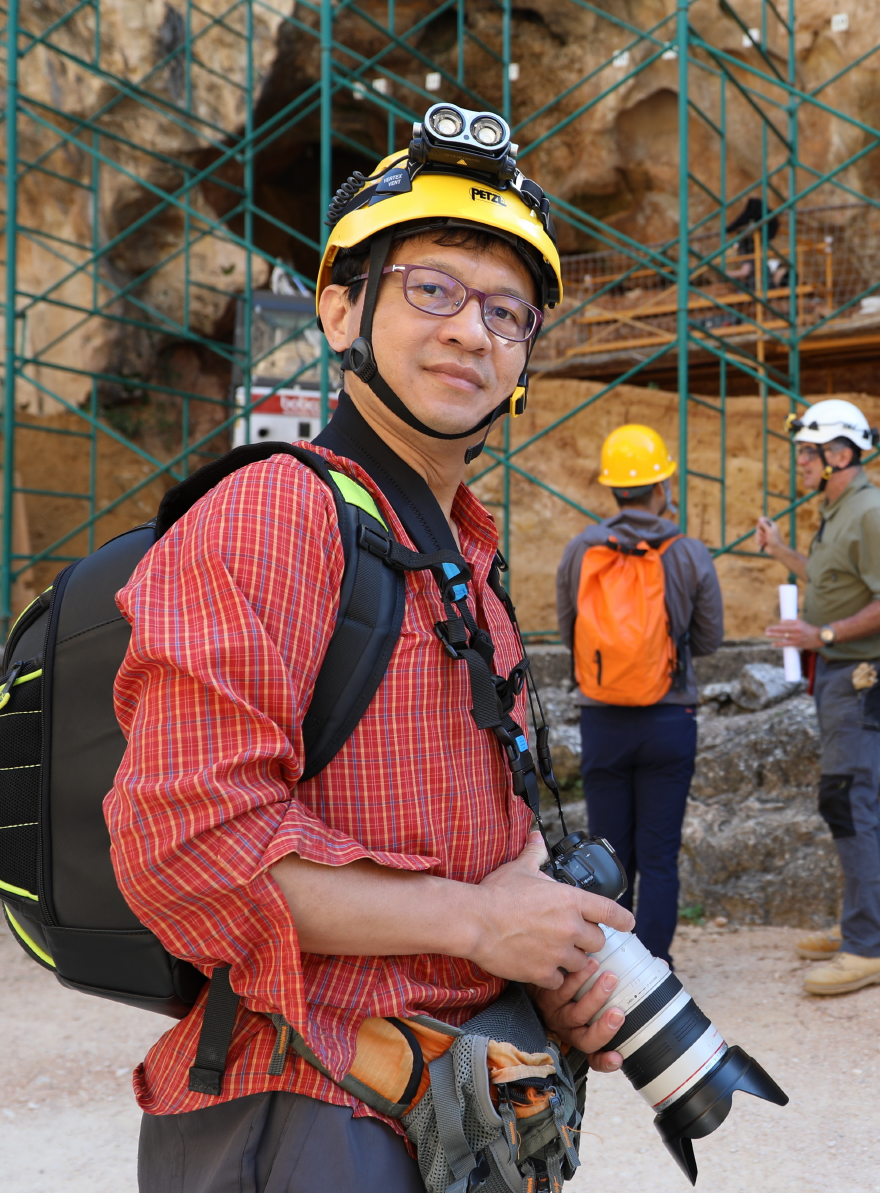
Chuan-Chou SHEN
Program uses Singapore Time and is 8 hours ahead of GMT
IG Distinguished Lecture/Live Q&A Mon-01 Aug 08:45 – 09:30
Dating the Ancient Pacific Ruins of Coral Pyramids and Nan Madol
Great Holocene civilizations were created worldwide by Homo sapiens. The last lands reached were islands in the Pacific, especially Remote Oceania, after some three thousand years ago. Astonishing architectures, such as Moai statues on Rapa Nui (Easter Island) and the marae of Polynesia, were made widespread in the Pacific. However, most of the construction histories remain uncertain due to the lack of developed writing system and the limitation of dating techniques.
Both special world-unique 5-6 truncated coral pyramidal tombs (20 L X 20 W X 4 H m3) on eastern Kosrae and Nan Madol (0.7 km in width and 1.5 km in length), a ruined city called the “Venice of the Pacific” with over 100 artificial islets, on the southeastern coast of island Pohnpei in Micronesia were built with basalt megaliths and scleractinian coral cobbles. Oral histories and charcoal 14C ages were used to estimate their construction time. Coral pyramidal tombs on Kosrae were suggested to be built sequentially in the 15, 17, and 19 centuries. The main construction of Nan Madol of Pohnpei could begin at 1200-1300 AD and ceased at 1500-1600 AD, associated with the rise and fall of the Saudeleur Dynasty.
Here, our international collaborative team used high-precision U-Th dating techniques, developed at the Department of Geosciences, National Taiwan University, to date the selected pristine coral infills and reveal the construction time of the two ruins. Results suggest the tombs in Kosrae were built about 700 years ago during the 14th century, approximately three centuries earlier than previously reported. With over 150 coral ages determined, results show that construction was underway at Nan Madol by AD 800, with building activity accelerating after AD 900s. A peak in activity during AD 1055-1075 is associated with the rise of the Saudeleur Dynasty. By AD 1411, construction activities ceased, associated with the dynasty’s downfall. Nan Madol construction and the rise and fall of the dynasty occurred 2-3 centuries earlier than previously estimated. Our findings of the early constructions of coral pyramids and Nan Madol provide new insights into our understanding of prehistoric civilizations in Micronesia and Oceania.
Professor Chuan-Chou Shen earned his Ph.D. from the National Tsing-Hua University in 1996. After returning from abroad in 2001, he has established a world-leading laboratory, highly reputed for developing advanced U-Th dating, isotopic and elemental techniques, and their applications to Earth sciences. During his scientific career, his teams have published more than 280 papers (source: Web of Science hereafter). The average citation number per paper is 36. Sixteen papers have been cited over 100 times and H-index is 42.
Prof. Shen and his collaborators have developed and published new elemental and isotopic techniques in the best geochemistry and analytical chemistry journals. The highlighted developments include high-precision coral dating techniques with precision of ±0.5 yr or less, new half-lives of 234U and 230Th and frontier U-Th dating techniques with new dating limitation to 800 thousand years, worldwide unique methods of direct measurement of carbonate rare earth elements, the best techniques of H/O isotope determination in nanoliter quantities of speleothem inclusion water, the best method of sulfur isotopic analysis, allowing small sample sizes, as low as 0.5-3 nmol sulfur, and new techniques of determination of 236U/238U ratios in natural samples.
He has led both domestic and international research teams and demonstrated outstanding achievements in diverse scientific fields. He has applied biogenic and inorganic carbonates to the fields of modern and past hydroclimate research, especially focusing on East Asia/Australia monsoons and tropical hydroclimate systems. From 2009, he has also been studying archeology, human evolution, and geomagnetism, and involved in the projects of earthquake supercycles in the Indo-Pacific realm.

Chuan-Chou SHEN
High-Precision Mass Spectrometry and Environment Change Laboratory (HISPEC), Department of Geosciences,
National Taiwan University
